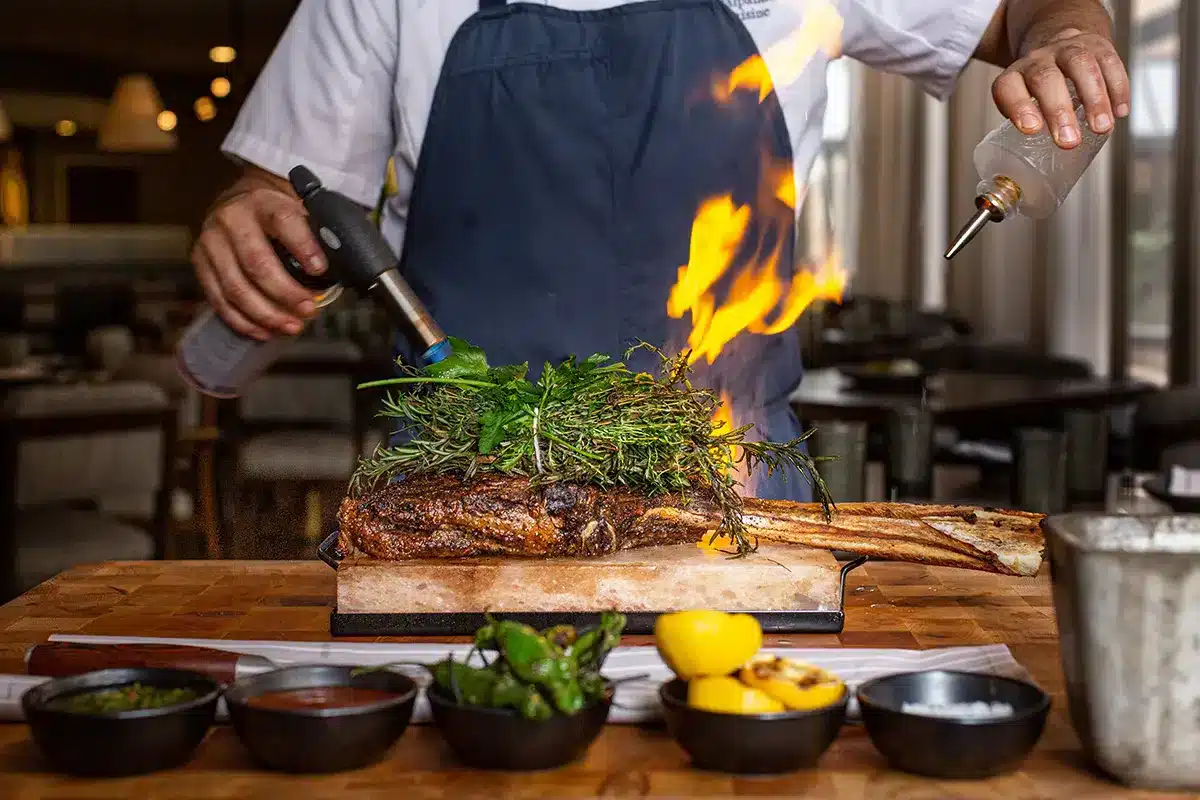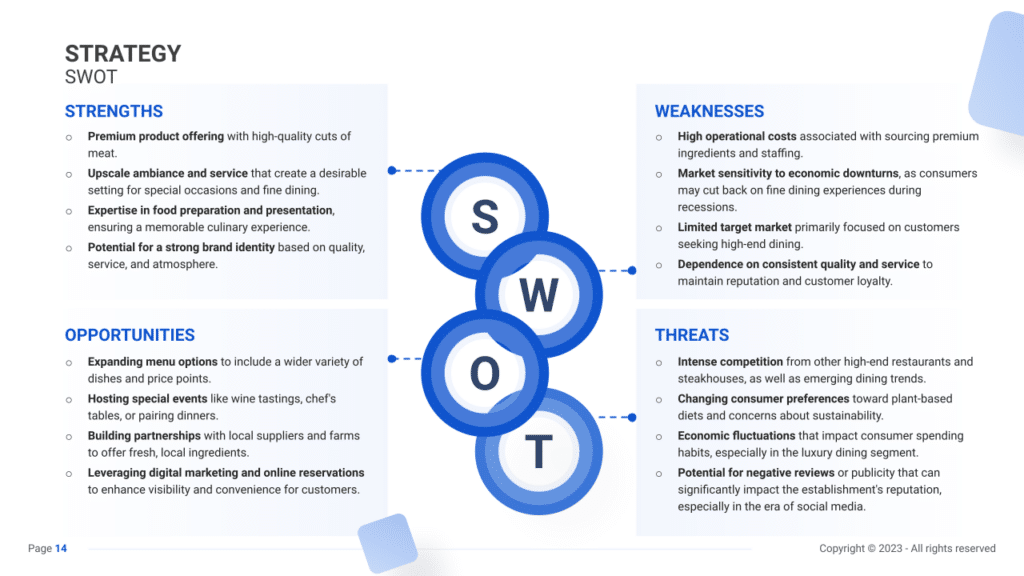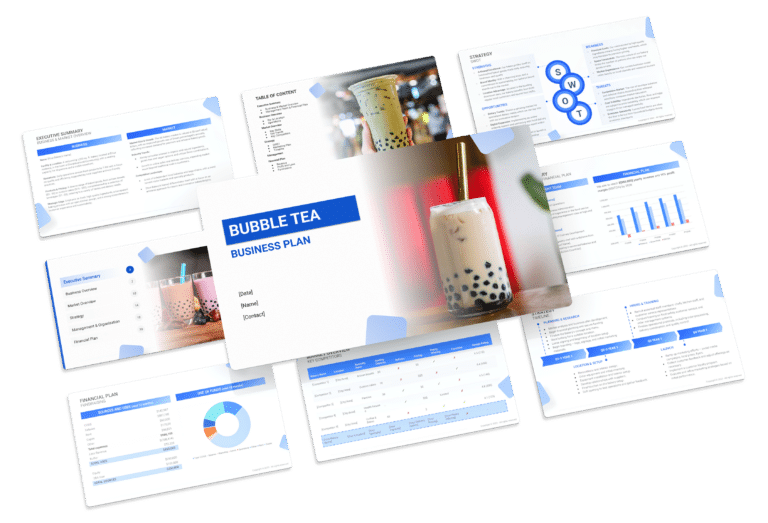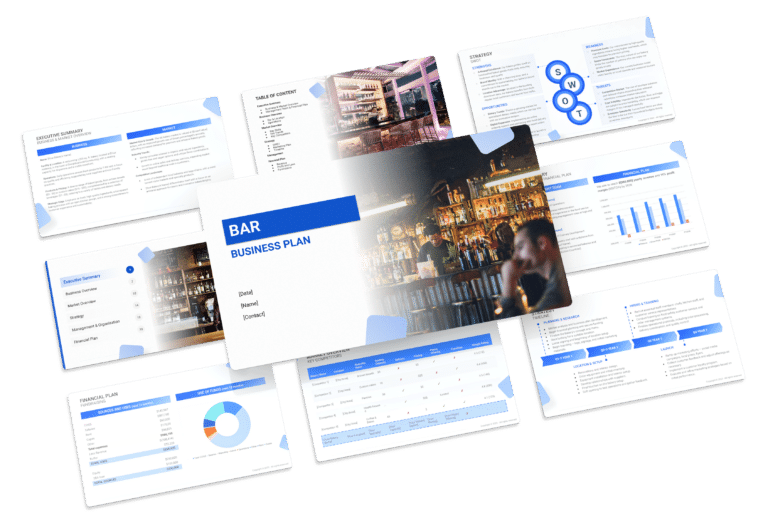How to Prepare a SWOT for a Steakhouse (Example)

Starting a steakhouse involves creating a business plan with a SWOT analysis. SWOT—Strengths, Weaknesses, Opportunities, and Threats—helps assess the business internally and externally.
Internally, strengths might include a unique menu or experienced chefs, while weaknesses could be limited vegetarian options or inconsistent service. Externally, there may be opportunities like increasing demand for upscale steakhouses or threats from competitors and changing tastes.
This analysis helps owners understand their position and identify growth areas, providing a foundation for a strong business plan. In this article, we’ll explore examples of strengths and weaknesses, helping steakhouse owners craft effective strategies for success.

Strengths
Strengths are the internal factors that give your steakhouse a competitive edge in the market. Identifying and leveraging these strengths is crucial for maintaining and growing your business.
- Prime Location: Your steakhouse is situated in a prime downtown location, attracting a steady stream of foot traffic and ensuring high visibility.
- Example: Being in a prime location means you have the opportunity to capture the after-work dining crowd, increasing your revenue potential.
- High-Quality Ingredients: Your steakhouse sources top-quality meat and fresh ingredients, ensuring that your dishes consistently meet high standards of taste and quality.
- Example: Highlighting the use of premium ingredients in your marketing materials can differentiate your steakhouse from competitors and attract discerning customers.
- Experienced Staff: Your kitchen and service staff are experienced and well-trained, providing excellent customer service and delivering perfectly cooked steaks.
- Example: Capitalize on the expertise of your staff by offering cooking classes or special chef’s table events to enhance the customer experience.
- Unique Menu Offerings: Your steakhouse offers a unique selection of signature steak cuts and creative sides, setting you apart from traditional steakhouse competitors.
- Example: Promote your unique menu items through social media and special promotions to draw in food enthusiasts seeking something different.
Weaknesses
Weaknesses are the internal factors that hinder your steakhouse’s performance or put it at a disadvantage. Identifying and addressing these weaknesses is essential for business improvement.
- Limited Vegetarian Options: Your steakhouse has limited vegetarian and vegan menu choices, potentially alienating a growing segment of health-conscious and plant-based customers.
- Example: Develop a separate vegetarian/vegan menu or introduce plant-based steak alternatives to expand your customer base.
- Inconsistent Service: Occasionally, there have been complaints about inconsistent service quality, leading to customer dissatisfaction.
- Example: Implement rigorous staff training programs and conduct regular performance evaluations to improve service consistency.
- Aging Decor: The interior decor of your steakhouse appears outdated, which might not align with the expectations of modern diners.
- Example: Consider investing in a renovation to create a more contemporary and inviting dining atmosphere.
- High Operating Costs: Operating costs, including utilities and labor, are relatively high, impacting your profit margins.
- Example: Explore cost-saving measures, such as energy-efficient appliances and optimizing staff scheduling, to improve your bottom line.
Opportunities
Opportunities are external factors or trends in the market that your steakhouse can capitalize on to achieve growth and success.
- Rising Demand for Premium Dining: There is a growing trend of consumers seeking premium dining experiences, willing to pay more for exceptional quality.
- Example: Consider introducing a high-end chef’s tasting menu to cater to this demand and increase your average check size.
- Catering and Events: The local community frequently hosts events and gatherings that require catering services.
- Example: Expand your services to include catering for weddings, corporate events, and private parties to tap into this revenue stream.
- Online Ordering and Delivery: With the rise of food delivery services and online ordering, you can reach a broader customer base.
- Example: Partner with popular food delivery apps and optimize your online menu for a seamless ordering experience.
- Local Partnerships: Collaborate with local wineries or breweries to offer unique wine and beer pairings, enhancing the dining experience.
- Example: Create exclusive pairing events to attract food and beverage enthusiasts in your area.
Threats
Threats are external factors or challenges that could negatively impact your steakhouse’s performance and profitability.
- Economic Downturn: Economic recessions or downturns can lead to reduced consumer spending on dining out.
- Example: Develop a contingency plan with promotions or value-driven offers to retain customers during economic challenges.
- Intense Competition: The steakhouse industry is highly competitive, with new restaurants continually entering the market.
- Example: Focus on maintaining your unique selling points and regularly update your menu to stay relevant and competitive.
- Health Regulations: Stringent health regulations, especially in the wake of public health crises, can disrupt operations and impact revenue.
- Example: Implement robust hygiene and safety measures to reassure customers and comply with health guidelines.
- Changing Consumer Preferences: Evolving dietary preferences and trends, such as increased focus on health and sustainability, can affect menu choices.
- Example: Stay flexible by periodically updating your menu to incorporate healthier and sustainable options to cater to changing tastes.





